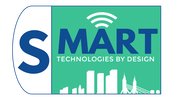|
The article is a continuation of an article we published in June 2020 - “Disruptive Technologies for Smart Cities - Artificial Intelligence” for the presentation of the interim results of the ongoing Erasmus+ project Smart technologies by design (Smart by Design). The article is based on the materials produced by the project partners GAIA & DEUSTO. Cloud Computing is a set of technologies that enables computational services over the network (usually the Internet). Namely, they are services accessible from any device connected to the network and allows access to applications, information and services without having to be installed on a hard drive. This type of technology enables the user to obtain total mobility as they can access their services, programmes and information from anywhere (Xhafa, F. et al., 2014). There are many companies that offer “cloud” services ranging from storage of files to running of software programmes accessible over the network. Therefore, Cloud computing represents a significant change in how companies and public bodies process data, files and applications. It offers thousands of tools to users and it is a service which may be accessed by all in terms of cost as it is normally provided through licenses granted depending on the number of users in each company. It also has a high level of security provided by the service provider and allows to work in a team remotely. According to Forrester Research, the global cloud market has a compound annual growth rate of 22% and is expected to reach $146 billion by the end of 2017 and 236 billion by 2020. Existing Platforms
Existing StandardsCloud Computing is a relatively new technology and therefore there are several entities still developing standards and it is assumed that there is still a long way to go. Currently, there are two types of standards related to cloud computing: prescriptive (communications) and evaluative (systems quality) (Aguilar, P. et al., 2016). In terms of ISO standards as of today the following exist (De Hert, P, et al., 2016):
These work groups have henceforth published several recommendations:
Key ApplicationsCloud computing has many potential applications and the most relevant are:
|
AuthorSmart by Design Archives
September 2021
Categories
All
|
|
The SMART by Technologies Design project [SMART by Design] Project No. 2019-1-BG01-KA202-062298 has been co-funded by the Erasmus+ Programme of the European Union.
This website reflects the views only of the author, and the European Commission cannot be held responsible for any use which may be made of the information contained therein |
SMART BY DESIGN |
SUPPORT |
Copyright ®2020 SMART BY DESIGN. All rights reserved.



 RSS Feed
RSS Feed
